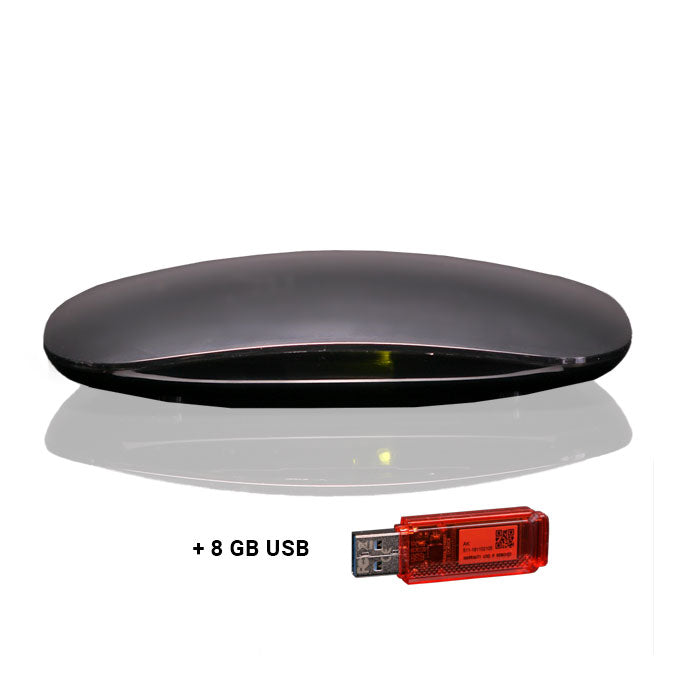Digital TV video recorders (DVRs) have transformed the way we watch television, allowing us to record, pause, and play back our favorite shows and movies. With so many options available, finding the right DVR for your setup can be challenging. In this article, we’ll explore everything you need to know about digital TV video recorders, from their features to choosing the best one for your home entertainment system.
1. What is a Digital TV Video Recorder?
A digital TV video recorder (DVR) is a device that records television shows and movies digitally, allowing you to store, pause, and replay content at your convenience. Unlike older VCRs, DVRs store recordings on a hard drive, offering better video quality and more storage. Whether you're catching up on missed episodes or saving your favorite films, DVRs provide unmatched flexibility.
2. How Does a Digital TV Video Recorder Work?
DVRs work by receiving and encoding television signals into a digital format, storing the content on an internal hard drive. They connect to your TV and often come with user-friendly interfaces, allowing you to schedule recordings in advance, set up series recordings, and even fast-forward through commercials. Some DVRs also integrate with streaming services, offering a unified viewing experience.
3. The Benefits of Owning a DVR
A DVR offers numerous benefits, including the ability to watch TV on your own schedule, pause live TV, and skip unwanted commercials. With a DVR, you no longer need to worry about missing a show or being tied to broadcast times. Additionally, many DVRs provide extensive storage space, allowing you to record entire seasons of shows without worrying about running out of space.
4. Key Features to Look for in a Digital TV Video Recorder
When shopping for a DVR, there are several key features to consider. Storage capacity is crucial—look for a model that offers at least 500GB of storage for optimal recording space. The ability to record multiple shows at once, HD recording quality, and a user-friendly interface are also important. Advanced features like mobile access, where you can schedule or watch recordings remotely, can further enhance your experience.
5. The Difference Between DVRs and VCRs
DVRs and VCRs both serve the purpose of recording television content, but the technology behind them differs greatly. While VCRs use analog tapes to store video, DVRs record content digitally onto a hard drive. DVRs also provide a better viewing experience, with higher quality video, the ability to pause live TV, and more storage space compared to VCR tapes.
6. Types of Digital TV Video Recorders
There are different types of DVRs available depending on your needs. Some are standalone devices that connect directly to your TV, while others are integrated into cable or satellite TV boxes. Network DVRs (nDVRs) store content in the cloud, allowing you to access your recordings from multiple devices. Choosing the right type depends on your specific viewing preferences and home setup.
7. DVRs and Streaming Services: A Perfect Pair
Modern DVRs often come with integrated streaming service support. This means that in addition to recording live TV, you can also access platforms like Netflix, Hulu, and Amazon Prime through your DVR interface. This combination creates a seamless entertainment hub where you can switch between recorded shows and streaming content with ease.
8. How to Set Up Your Digital TV Video Recorder
Setting up a DVR is typically a straightforward process. First, connect the DVR to your TV and antenna or cable box using the appropriate cables (HDMI, coaxial, etc.). Then, follow the on-screen instructions to complete the installation and configure your DVR settings, such as your recording preferences, resolution, and storage management. Many DVRs also include user-friendly apps for remote access and control.
9. Recording Multiple Shows Simultaneously
One of the most popular features of a DVR is its ability to record multiple shows at once. Some DVRs allow you to record up to six programs simultaneously, ensuring you never miss out on your favorite series or live sports events. This feature is particularly useful for families or households with diverse viewing interests.
10. DVR Storage Capacity: How Much Do You Need?
Storage capacity is one of the most important factors when selecting a DVR. The amount of storage you need depends on how much TV you watch and whether you record in HD or standard definition. For most users, 500GB to 1TB of storage is sufficient, offering space for hundreds of hours of recordings. However, avid TV watchers or those who prefer HD recordings may want to opt for a model with 2TB or more.
11. How to Manage Your DVR Storage
Once you start recording shows and movies, managing your DVR’s storage space becomes essential. Most DVRs come with tools that allow you to prioritize recordings, automatically delete old content, or transfer recordings to an external storage device. Regularly clearing out shows you’ve already watched helps ensure you always have space for new recordings.
12. DVR Remote Access: Watch Anywhere, Anytime
Many modern DVRs offer remote access, allowing you to watch your recorded content from anywhere using a smartphone or tablet. This feature is ideal for people who travel frequently or want to watch their favorite shows on the go. By logging into your DVR’s app, you can stream your recordings, schedule future recordings, or even delete unwanted content remotely.
13. DVRs and Live TV: Pausing and Rewinding
One of the most convenient features of DVRs is the ability to pause and rewind live TV. Whether you need to step away during an important scene or want to rewatch a moment, DVRs let you control your viewing experience. Simply press pause on your remote, and the DVR will continue recording in the background so you don’t miss a thing.
14. DVRs and 4K TV: Future-Proofing Your Home Entertainment
As 4K television becomes more widespread, many DVRs are now compatible with 4K Ultra HD recordings. If you own a 4K TV or plan to upgrade soon, choosing a DVR that supports 4K ensures your device is future-proofed for the highest-quality content. Keep in mind that 4K recordings take up more storage space, so opting for a larger hard drive may be necessary.
15. Top DVR Brands and Models to Consider
When shopping for a digital TV video recorder, certain brands and models stand out for their reliability, features, and user-friendliness. Popular options include TiVo, which is known for its comprehensive interface and streaming integration, and the Amazon Fire TV Recast, which offers excellent integration with Alexa and other Amazon products. Other notable brands include Dish, DirecTV, and Tablo, each offering unique features to enhance your TV-watching experience.
FAQs About Digital TV Video Recorders
Q1: Can I record multiple shows at the same time?
Yes, many DVRs allow you to record multiple shows simultaneously. The number of shows you can record at once depends on the specific DVR model, but some can handle up to six programs at a time.
Q2: How much storage do I need on my DVR?
The amount of storage you need depends on your recording habits. For standard usage, 500GB to 1TB is typically sufficient, but if you record a lot of content, especially in HD, you may want a DVR with 2TB or more of storage.
Q3: Can I watch my DVR recordings on my smartphone?
Many modern DVRs offer remote access through apps, allowing you to watch your recordings on smartphones, tablets, or computers from anywhere with an internet connection.
Q4: Do DVRs work with streaming services?
Yes, many DVRs come with built-in support for popular streaming services like Netflix, Hulu, and Amazon Prime, creating an all-in-one entertainment system that integrates both live TV and streaming.







